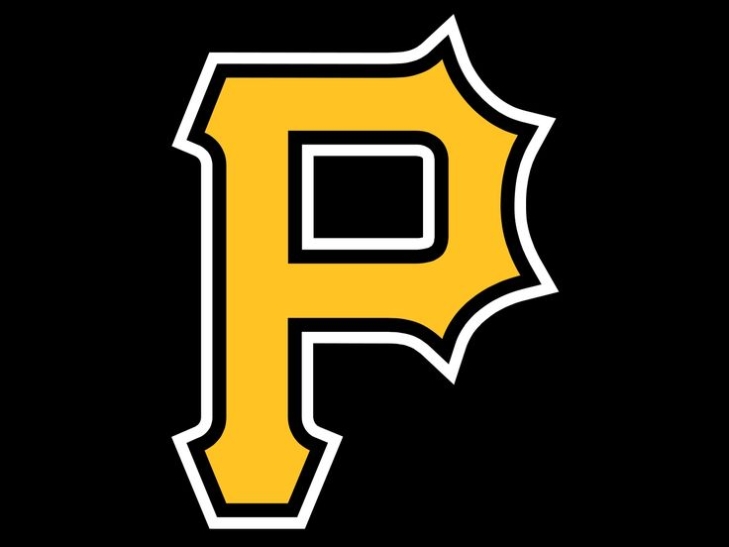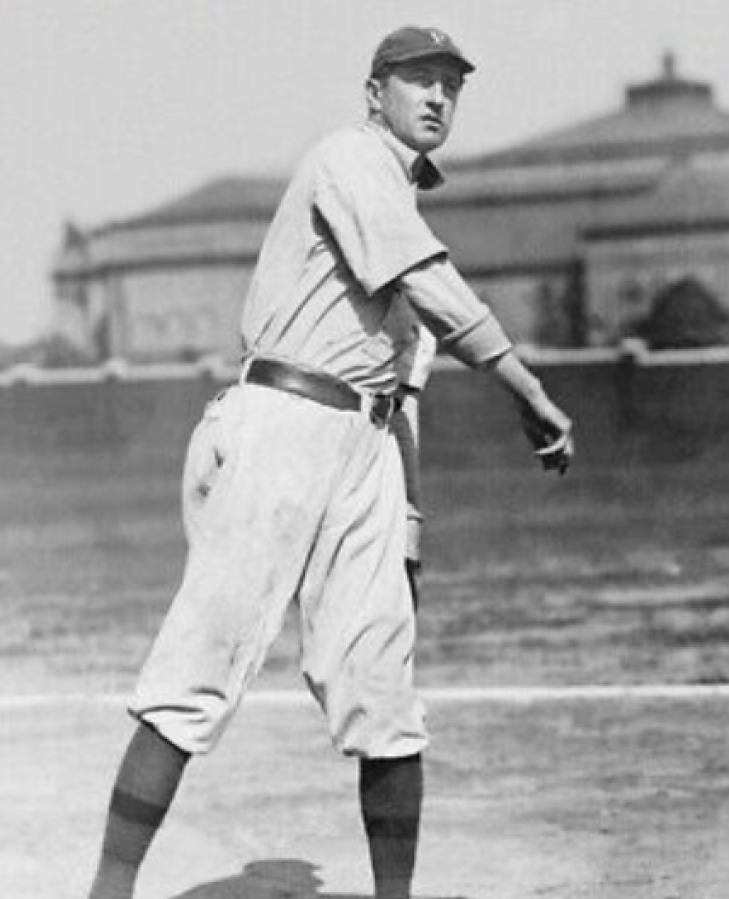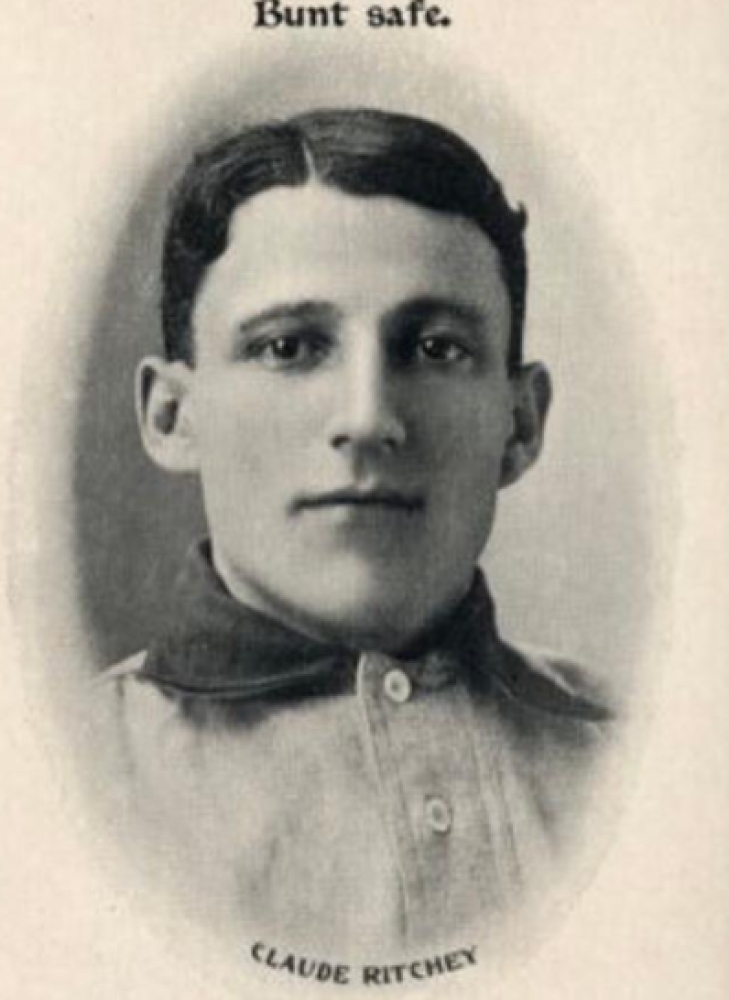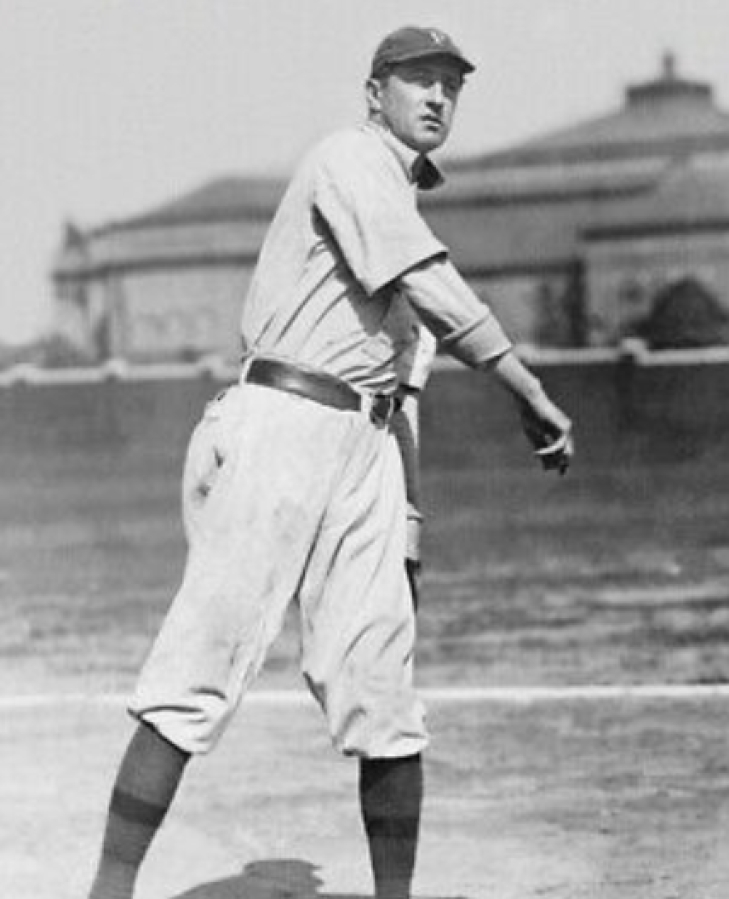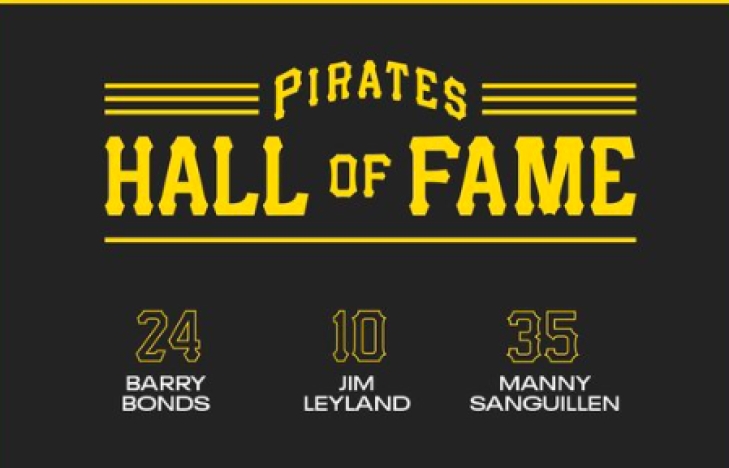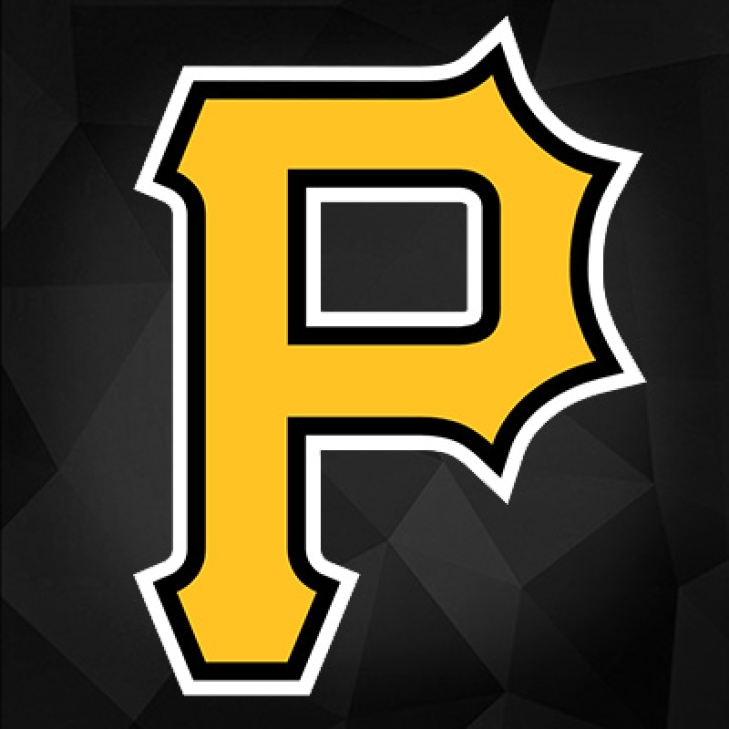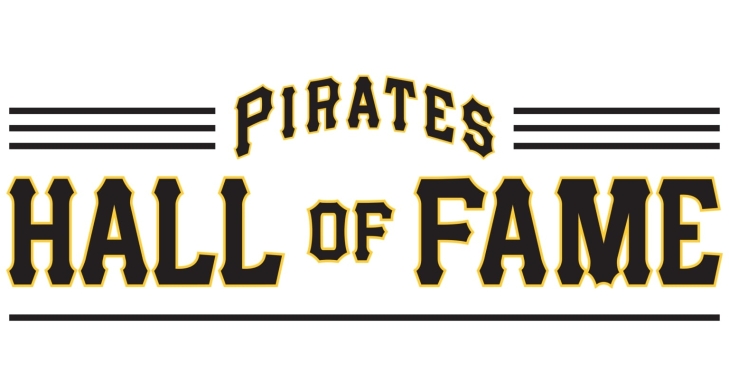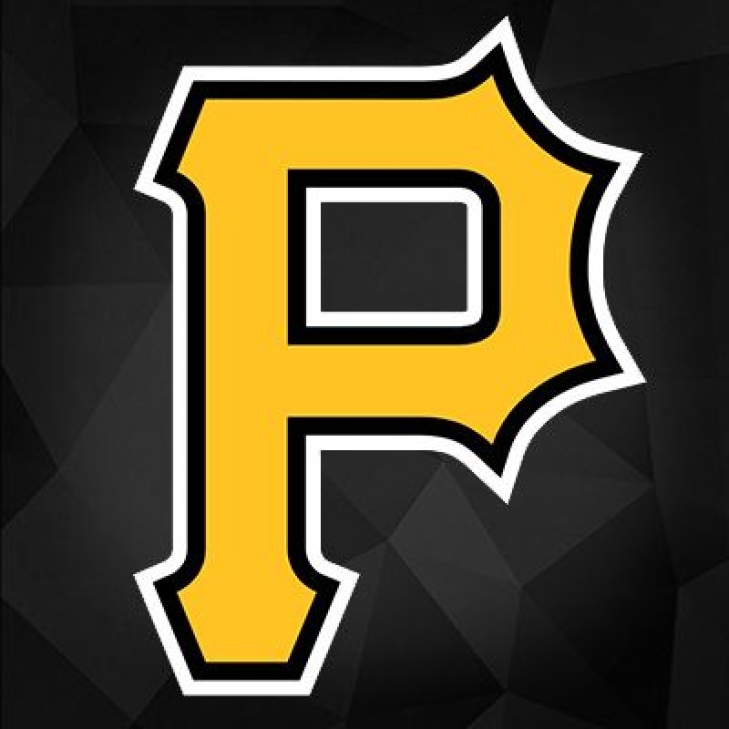Our All Time Top 50 Pittsburgh Pirates have been revised to reflect the 2024 Season
Yes, we know that this is taking a while!
As many of you know, we at Notinhalloffame.com are slowly generating the top 50 of each major North American sports team. That being said, we have existing Top 50 lists and consistently look to update them when necessary and based on necessity. As such, we are delighted to present our post-2024 revision of our top 50 Pittsburgh Pirates.
As for all of our top 50 players in baseball, we look at the following:
1. Advanced Statistics.
2. Traditional statistics and how they finished in the National League.
3. Playoff accomplishments.
4. Their overall impact on the team and other intangibles that are not reflected in a stat sheet.
Please note that our algorithm has changed, which yielded minor changes throughout the baseball lists.
Last year, the small market Pirates again finished in the NL East basement, finishing 76-86. There were three new entrants, though all enter based on the new algorithm and they are players from many years ago.
As always, we present our top five, which saw no changes.
1. Honus Wagner
3. Paul Waner
4. Arky Vaughan
You can find the entire list here.
Andrew McCutchen was unable to get past #11.
The three new entrants are Second Baseman Claude Ritchey at #48, Third Base Richie Hebner at #49 and Pitcher Vic Willis at #50.
We thank you for your continued support of our lists on Notinhalloffame.com.
49. Richie Hebner
Playing most of his career with Pittsburgh, Richie Hebner became Pittsburgh’s starting Third Baseman in 1969, which he held until he left for rival Philadelphia in 1977.
Over his first run with the Pirates, Hebner helped Pittsburgh make the playoffs five times, including winning the 1971 World Series. While Hebner was never s superstar (or even an All-Star), he was solid defensively, had decent power (128 Home Runs as a Pirate) with 1,079 Hits and a .277 Batting Average. He returned to Pittsburgh in a reserve role in 1982 for a season-and-a-half.
48. Claude Ritchey
Claude Ritchey was one of the 14 players that the Pittsburgh Pirates acquired from the dismantling of the Louisville Cardinals in 1899. Ritchey was not one of the bigger stars of the deal, but the infielder was one of the most dependable.
Ritchey played for the Pirates from 1900 to 1906, providing strong defense in the middle and had a solid 965 Hits with a .277 Batting Average and helped them reach the 1903 World Series. It was a decent run that was largely unnoticed as he played alongside Honus Wagner at Shortstop, but it is worth celebrating.
The Pittsburgh Pirates announce their Hall of Fame Class of 2024
Regular visitors of Notinhalloffame.com know that we are slowly working on the top 50 of every major team in the NHL, NBA, NFL, and MLB. Once that is done, we will look at how each team honors its past players, coaches, and executives. As such, it is important to us that the Pittsburgh Pirates have announced that Barry Bonds, Jim Leyland and Manny Sanguillen to their franchise Hall of Fame,
This will be the third class, and the trio will be officially inducted during their home game on August 24.
Bonds was drafted in the first round in 1985 and made his Pirates debut the following year. Blasting 176 Home Runs with 556 RBIs for Pittsburgh, he propelled them to three straight playoffs (1990-92), and won the MVP in 1990 and 1992, with a second-place finish in 1991. In addition, from ’90 to ’92, Bonds led the NL in bWAR, and won each year's Silver Slugger and Gold Glove. He went on to win five more MVPs with the San Francisco Giants.
Bonds enters with his longtime manager, Jim Leyland, who months earlier was selected by the Veteran’s Committee to enter the Baseball Hall of Fame. Leyland was their manager from 1986 to 1996, and had a record of 851-863, which was impressive considering that he did have a lot of talent to work with.
A Pirate for 12 of his 13 MLB Seasons, Sanguillen had 1,343 Hits, was a three-time All-Star and won two World Series rings with the club.
We here at Notinhalloffame.com would like to congratulate Bonds, Leyland and Sanguillen for this impending honor.
Our All-Time Top 50 Pittsburgh Pirates Have been revised to reflect the 2023 Season
Yes, we know that this is taking a while!
As many of you know, we here at Notinhalloffame.com are slowly generating the top 50 of each major North American sports team. That being said, we have existing Top 50 lists out, and we always consistently look to update them when we can and based on necessity. As such, we are very happy to present our post-2023 revision of our top 50 Pittsburgh Pirates.
As for all of our top 50 players in baseball, we look at the following:
1. Advanced Statistics.
2. Traditional statistics and how they finished in Major League Baseball.
3. Playoff accomplishments.
4. Their overall impact on the team and other intangibles that are not reflected in a stat sheet.
Last year, the Pirates got off to a good start but were unable to hold that momentum, and they again missed the playoffs. There were no new entrants but one small elevation.
As always, we present our top five, which saw no changes:
1. Honus Wagner
3. Paul Waner
4. Arky Vaughan
You can find the entire list here.
The only change was the returning Andrew McCutchen, who went up one spot to #11.
We thank you for your continued support of our lists on Notinhalloffame.com.
The Pittsburgh Pirates announce four members for the 2023 Class
Regular visitors of Notinhalloffame.com know that we are slowly working on the top 50 of every major team in the NHL, NBA, NFL and MLB. Once that is done, we intend to look at how each team honor their past players, coaches and executives. As such, it is important to us that the Pittsburgh Pirates have announced the second class for their franchise Hall of Fame.
Last year, the Pirates enshrined 19 former greats into their inaugural class, and we now have four former players; Dick Groat, Bob Friend, Elroy Face and Kent Tekulve will be joining them.
Groat played for Pittsburgh for nine years (1952 & 1955-62), and the Shortstop won the 1960 National League MVP in a year he anchored them to a World Series while individually winning a Batting Title. An All-Star six times with Pittsburgh, he batted .290 with 1,435 Hits for the team.
Face played for the Pirates for 15 seasons (1953 & 1955-68), where the pitcher’s career was instrumental in discussing the evolution of relief Pitching. A member of Pittsburgh’s 1960 World Series Champions, Face led the NL in Saves three times, Games Finished four times and was a six-time All-Star. He compiled 186 Saves with a 100-93 Record for the Pirates.
Friend was also a key member of Pittsburgh’s 1960 World Series squad. The Starting Pitcher went to four All-Star Games, won the 1955 ERA Title, and played 15 of his 16 Years with the Pirates. He has a record of 191-128 and 1,682 Strikeouts with Pittsburgh.
Tekulve was Pittsburgh’s closer during their 1979 World Series win. The bespectacled hurler had 158 Saves and 470 Games Finished for the Pirates.
The four players will be officially inducted in a pre-game ceremony on August 26 before their game against the Chicago Cubs.
We here at Notinhalloffame.com would like to congratulate the newest members of the Pittsburgh Pirates for earning this impending honor.
Our All-Time Top 50 Pittsburgh Pirates are now up!
Yes, we know that this is taking a while!
As many of you know, we here at Notinhalloffame.com are slowly generating the 50 of each major North American sports team. We have a new one to unveil today, that of the Pittsburgh Pirates.
The Pittsburgh Pirates first came into existence in 1882, first as the Alleghenys before changing their name to the Pirates in 1892. They played in the first modern World Series in 1903, and won their first in 1909. Since then, they have won four more, 1925, 1960, 1971 & 1979, and was the home of some of the greatest names in the game.
This list is up to the end of the 2022 regular season.
Our Top 50 lists in Baseball look at the following:
1. Advanced Statistics.
2. Traditional statistics and how they finished in the National League.
3. Playoff accomplishments.
4. Their overall impact on the team and other intangibles not reflected in a stat sheet.
Remember, this is ONLY based on what a player does on that particular team and not what he accomplished elsewhere and also note that we have placed an increased importance on the first two categories.
This list is updated up until the end of the 2022 Season.
The complete list can be found here, but as always, we announce our top five in this article. They are:
1. Honus Wagner
3. Paul Waner
4. Arky Vaughan
We will continue our adjustments on our existing lists and will continue developing our new lists.
Look for our more material coming soon!
As always, we thank you for your support.
The Pittsburgh Pirates announce 19 names for their first Hall of Fame class
Regular visitors of Notinhalloffame.com know that we are slowly working on the top 50 of every major team in the NHL, NBA, NFL and MLB. Once that is done, we intend to look at how each team honor their past players, coaches and executives. As such, it is news to us that the Pittsburgh Pirates have FINALLY announced the creation of a franchise Hall of Fame and announced 19 members to the inaugural class.
The franchise, which is well over 100 years old, boasts five World Series Championships, but this Hall also recognizes the contributions from the Homestead Grays and the Pittsburgh Crawford of the Negro Leagues.
The Hall of Fame will be unveiled on September 3, and will be honored before their home game against the Toronto Blue Jays:
The inaugural class comprises:
Jake Beckley: Beckley played for the Pirates in the late 1880s and 1890s where he batted an even .300 for the team. The First Baseman entered the Baseball Hall of Fame in 1971.
Steve Blass: Blass pitched ten years for Pittsburgh, going 103-76, and picked up a World Series Ring in 1971. He would later serve 34 years as a broadcaster for the team.
Ray Brown: Brown led the Grays to eight Pennants and was a six-time league leader in Wins with two ERA Titles.
Max Carey: Carey holds the team record with 690 Stolen Bases and was an 11-time league leader. Collecting 2,416 Hits for the club, Carey aided the Pirates in their 1925 World Series win, and was enshrined in the Baseball Hall of Fame in 1961.
Oscar Charleston: Charleston joined the Crawfords in 1933 as a Player/Manager, where he was a three-time All-Star. He was selected for the Baseball Hall of Fame in 1976.
Fred Clarke: Clarke played 15 seasons with Pittsburgh, compiling 1,638 Hits with a .299 Batting Average, but he was also their Manager, leading Pittsburgh to their first World Series win in 1909. He entered the Baseball Hall of Fame in 1945.
Roberto Clemente: Clemente is one of the most important figures in sports, and was one the most complete baseball players ever. The Puerto Rican helped Pittsburgh win the 1960 and 1971 World Series, while individual winning the 1966 MVP, four Batting Titles and 12 Gold Gloves. He is still the all-time leader in Hits with 3,000, and would have had more had he not died tragically in a plane clash while delivery humanitarian aid. After his death, he was posthumously elected to the Baseball Hall of Fame in 1973.
Josh Gibson: Gibson was one of the most prolific sluggers in Baseball, and he led the Negro Leagues in Home Runs 11 times, all either while playing for the Crawfords or Grays. Gibson entered the Baseball Hall of Fame in 1972.
Ralph Kiner: Kiner made history as the first (and only) player in MLB history to win the Home Run Title in his first seven seasons, and he blasted 301 total for Pittsburgh, which is second all-time for the club. A three-time Slugging and OPS Champion, Kiner entered the Baseball Hall of Fame in 1975.
Buck Leonard: Leonard played 15 years with Homestead, where he went to 13 All-Star Games, won three Negro League World Series, and was a two-time Batting and five-time OBP Champion. He was chosen for the Baseball Hall of Fame in 1972.
Bill Mazeroski: Mazeroski was a seven-time All-Star who hit the game and series-ending Home Run that won the 1960 World Series. The eight-time Gold Glove recipient went into the Baseball Hall of Fame in 2001.
Danny Murtaugh: Murtaugh managed the Prates for 12 seasons and was at the helm when they won the World Series in 1960 and 1971.
Dave Parker: The “Cobra” played 11 years in Pittsburgh where he helped them win the 1979 World Series. Individually, he went to four All-Star Games as a Pirate, won two Batting Titles and won the 1978 MVP.
Willie Stargell: Stargell played all 21 of his seasons with Pittsburgh where he led them to two World Series Titles (1971 & 1979), with the latter year seeing him win the MVP, NLCS MVP and World Series MVP. His 475 Home Runs are a franchise record, and he was selected for the Baseball Hall of Fame in 1988.
Pie Traynor: Traynor played at Third Base for 17 years in Pittsburgh, amassing 2,416 Hits while batting .320. Part of the 1925 World Series Champions, Traynor was inducted into the Baseball Hall of Fame in 1948.
Arky Vaughan: In 1935, Vaughan won the Batting Title with what is still a franchise record .385, and he would also be a three-time league leader in On Base Percentage. An eight-time All-Star, Vaughan entered the Baseball Hall of Fame in 1985.
Honus Wagner: Wagner is one of the best players in Baseball history, and any discussion of the game’s top Shortstops has to include him. Winning eight Batting Titles, Wagner also stole 723 Bases, a franchise record. A member of the 1909 World Series Championship Team, he also still holds franchise marls for Runs (1,521) and Triples (231), and his 2,970 Hits are second behind only Clemente. Wagner was inducted into the Baseball Hall of Fame as part of their first class in 1936.
Lloyd Waner: Accumulating 2,317 Hits for Pittsburgh, Waner batted .319 for the team, while also leading the NL in At Bats three times. Waner was selected for the Baseball Hall of Fame in 1967.
Paul Waner: Waner won three Batting Titles with Pittsburgh, while batting .340 with 2,868 Hits for the team. Named the MVP in 1927, Waner entered the Baseball Hall of Fame in 1952.
We here at Notinhalloffame.com would like to congratulate the new members of the Pittsburgh Pirates Hall of Fame.
47. Tony Pena
Tony Pena signed with the Pirates as an Amateur Free Agent in 1975, and five years later, the Dominican Catcher made his first appearance for the parent club.
Pena became Pittsburgh’s lead Catcher in 1982, and he was an All-Star that year. Batting .301 with 15 Home Runs in 1983, Pena received the most MVP votes of his career, with an 11th place finish. Pena also won the Gold Glove, his first of three straight, and over the next two seasons he led the NL in Runners Caught Stealing. He would also finish in the top ten Defensive bWAR four times, including a league-leading 2.5 in 1984.
Pena went to three more All-Star Games as a Pirate and had five consecutive double-digit years in Home Runs (1982-86). He was traded to St. Louis after the 1986 Season, leaving the club with 821 Hits, a .286 Batting Average, and 63 Home Runs.
45. Gene Alley
Gene Alley played his entire career with the Pittsburgh Pirates, debuting in 1963 until he retired after the 1973 Season.
Alley became Pittsburgh’s starting Shortstop in 1965, and though he was not a potent hitter, he proved to be an excellent defensive player. In Alley's best offensive year, 1966, he had career-highs in Hits (173) and Batting Average (.299), was 11th in MVP voting, and won the first of two Gold Gloves. Alley went to two All-Star Games (1967 & 1968), was twice the National League leader in Defensive bWAR (1965 & 1968), and aided the Pirates in their 1971 World Series win.
Alley had 999 career Hits with a lifetime Defensive bWAR of 14.7.
46. Jay Bell
When Jay Bell played for the Pittsburgh Pirates, he knew his role was; provide good defense and get his baserunners over. He did his job well!
Bell was the player to be named later in the pre-1989 season transaction with Cleveland, and after appearing in 70 Games that year, he entered 1990 as Pittsburgh's starting Shortstop. What Bell lacked in pure athleticism, he made up for in intelligence. Bell always seemed to know where the batters would hit ground balls, and as a Pirate, he was in the top six in Defensive bWAR three times, while also leading all National League Shortstops in Assists four times and Putouts three times.
Bell was not a power hitter, but he was selfless. A two-time leader in Sacrifice Hits, Bell was able to get Hits still, primarily shown in 1993, when stars like Barry Bonds and Barry Bonilla had already left. Bell batted .310 that year, had a career-high 187 Hits, and went to his first All-Star Game. He also won the Silver Slugger that year.
Bell’s time with the Pirates ended when Kansas City traded for him after the 1996 Season. He had 1,124 Hits with a .269 Batting Average for the team.
43. Frank Killen
Frank Killen stood at 6' 1" and was long and lean, which might not seem impressive with today's eyes, but for the 1890s, he looked like a supreme athlete.
Killen reached the highest level of Baseball in 1892 with the Washington Senators, but the highly emotional Pitcher proved hard to control, and the management of the Senators looked to deal him away, despite his high skill level. Washington traded Killen after one year to Pittsburgh, who were willing to take a chance on the temperamental southpaw.
Killen, who won 29 Games for the Senators in '92, led the National League with 36 in 1893. While Killen was still just as much of a headache as a Pirate, the Pittsburgh brass and fans were more tolerant after an injury-plagued 1894 and a horrific 1895, where he looked to be washed up.
He turned it around in 1896, healthy and just as cocky as ever. Killen led the NL in Wins (30), Complete Games (44), and Innings Pitched (432.1), and he won back the fans who had heckled him before. This was Killen's peak, as his effectiveness shrunk afterward, and he was no longer worth the hassle and was released in August of 1898.
With the Pirates, Killen had a record of 112-82.
41. Brian Giles
Pittsburgh Pirate in the middle of his career, Brian Giles was at his best when he played in the black and yellow.
Giles was traded from Cleveland after four years to the Padres and was the bright spot on some awful Pittsburgh teams. In the four full seasons he was with Pittsburgh, he never had a year where he did smack at least 35 Home Runs, received an MVP vote, and batted over .300 in three of them. Giles was a National League All-Star in 2000 and 2001, but the slumping Pirates traded him to San Diego during the 2003 campaign.
With Pittsburgh, Giles had 782 Hits, 165 Home Runs, and batted .308.
39. Jake Beckley
The Pittsburgh Alleghenys purchased Jake Beckley's contract in 1888, and it was in Pittsburgh where he became a star.
The First Baseman was solid in his first two years, batting over .300, but like many other National League players, Beckley bolted for the Players League in 1991, staying in the Steel City with the Burghers. To Beckley’s credit, he was open about his decision, citing that he was “only in this game for the money." The Players League was a bust, and Beckley returned to National League.
After a decent 1891, “Eagle Eye” slumped to poor levels in 1892 (.236/.288/.381), Beckley rebounded batting over .300 the nest three seasons with his netting over 100 RBI in all of those seasons. After getting off to a poor start in 1896, Beckley was traded to New York, ending his stay in Pittsburgh.
With Pittsburgh, Beckley smacked 1,140 of his 2,938 career Hits while batting .300. The Baseball Hall of Fame inducted Beckley via the Veteran's Committee in 1971.
42. Rick Rhoden
Rick Rhoden was an All-Star with the Dodgers, helping them reach the World Series, but they were concerned with his shoulder and agreed to trade him to the Pittsburgh Pirates before the 1979 Season.
Rhoden's shoulder was in bad shape, and he only played in one Game in Pittsburgh's 1977 World Series-winning season. The Pirates' patience paid off as Rhoden returned to form and won at least 10 Games for the club from 1982 to 1986, peaking at 15 in 1986. That season, Rhoden was named to his first All-Star Team in a decade while posting a 2.84 ERA and 1.131 WHIP. For the first and only time in his career, Rhoden received Cy Young votes, finishing fifth.
Rhoden was also one of the best hitting Pitchers of his day. With the Pirates, he won three consecutive Silver Sluggers (1984-86) and batted .251 with 127 Hits with Pittsburgh. He was also an excellent fielder, having finished with a perfect Fielding Percentage five times as a Pirate.
After the 1986 Season, Rhoden was traded to the Yankees. His Pittsburgh stats included a 3.51 ERA, 852 Strikeouts, and a record of 79 and 73.
32. Starling Marte
A product of the Dominican Republic, Starling Marte began his professional baseball career with the Pittsburgh Pirates, the team that signed him in 2007 and which he debuted for in 2012.
Playing in Centerfield, Marte had at least 140 Hits from 2013 to 2016, showing a nice blend of power and speed, belting 53 Home Runs and 1478 Stolen Bases while going to the All-Star Game on the strength of his first .300 Season in 2016. Defensively, Marte was fabulous, winning two Gold Gloves (2015 & 2016) and the Wilson Defensive Award in 2015.
Marte 80 Games in 2017 due to a PED suspension; Marte still managed to steal 21 Bases that year and stole 20 or more the next two years giving him seven straight. With his contract coming due, Marte was traded to Arizona after the 2019 Season, leaving Marte’s numbers as a Pirate saw him bat .287 with 1,047 Hits, 108 Home Runs, and 239 Stolen Bases.
34. Kent Tekulve
Bespectacled and unassuming, Kent Tekulve was one of the better Relief Pitchers in the National League for years.
Tekulve was in the Pirates organization from 1969 to 1985, debuting for the parent club in 1974. Having never started a game for Pittsburgh, the submarine-style hurler settled in with the Pirates bullpen, becoming their closer in 1978. That year, and the year after, Tekulve led the National League in Games Pitched, Games Finished and was fifth in Cy Young balloting. Tekulve was also instrumental in Pittsburgh's 1979 World Series Championship, saving three games, including the deciding one.
Tekulve continued to be a top reliever in the early 80s but was traded to their in-state rival, Philadelphia, before the 1985 Season. With the Pirates, Tekulve appeared in 722 Games, saved 158, and finished 470.
38. Bobby Bonilla
Bobby Bonilla will always be more known for the contract he signed with the New York Mets, of which he is still getting paid for today, but at his peak, he was a dynamic MVP contender whose best years were in Pittsburgh.
Bonilla was first signed by the Pirates as an Amateur Free Agent in 1981 but would be plucked by the White Sox in the 1986 Rule 5 Draft. After 75 Games, Bonilla was traded back to the Pirates, and the year after, he entered the season as the starting Third Baseman. Offensively, Bonilla was solid, earning a Silver Slugger and earning the trip to what would be four straight All-Star Games. Defensively, he struggled, and he was moved to Rightfield, joining Barry Bonds and Andy Van Slyke as one of the most potent trios in Baseball.
In 1990, Bonilla had 32 Home Runs and 120 RBI, won the Silver Slugger, and was second in MVP voting, coming in behind only Bonds. Bonilla was third for the MVP in 1991 (18 HR, 100 RBI, .302 BA) and was again a Silver Slugger. He would leave for the Mets afterward via free agency but would not produce what he did as a Pirate.
With Pittsburgh, Bonilla belted 114 Home Runs with 500 RBI with a .284 Batting Average.
44. Bob Veale
Bob Veale was a Pittsburgh Pirate for most of his career, signing as an Amateur Free Agent in 1958, debuting for the Pirates in 1962, and joining the starting rotation two seasons later.
From 1964 to 1967, Veale won at least 16 Games and was the league leader in Strikeouts (250) in '64. He fanned at least 200 batters the next two years, and again in 1969, but he was also prone to delivering Walks, leading the NL four times in that category.
Late in his Pirates career, Veale helped Pittsburgh win the 1971 World Series. He was sold to Boston shortly after, but he was never the same player.
Veale had a 116-91 Record as a Pirate.


